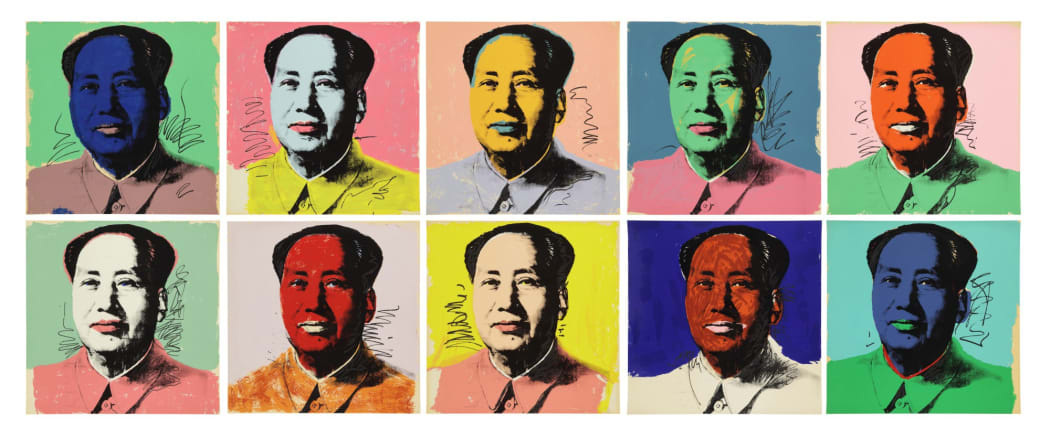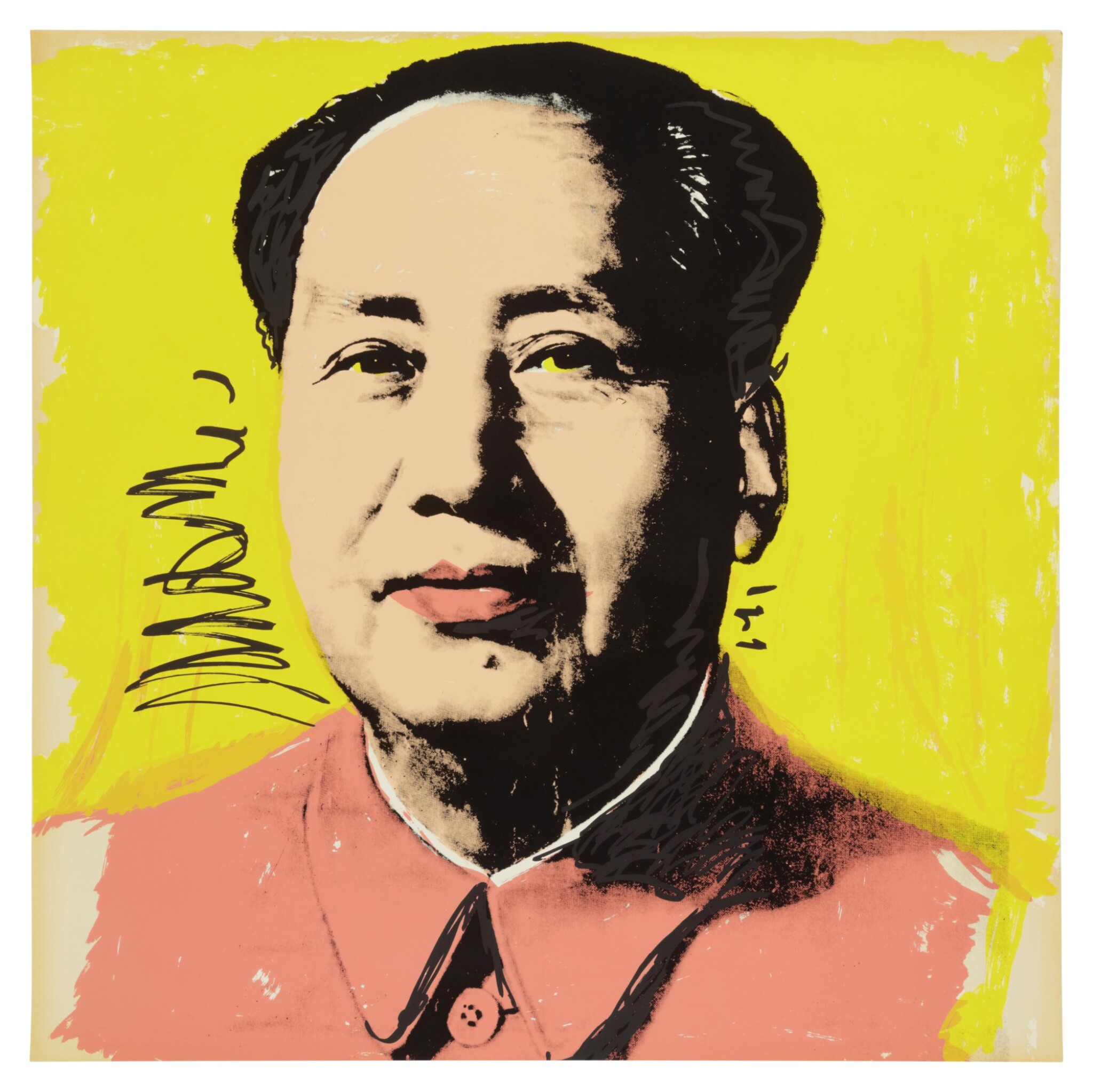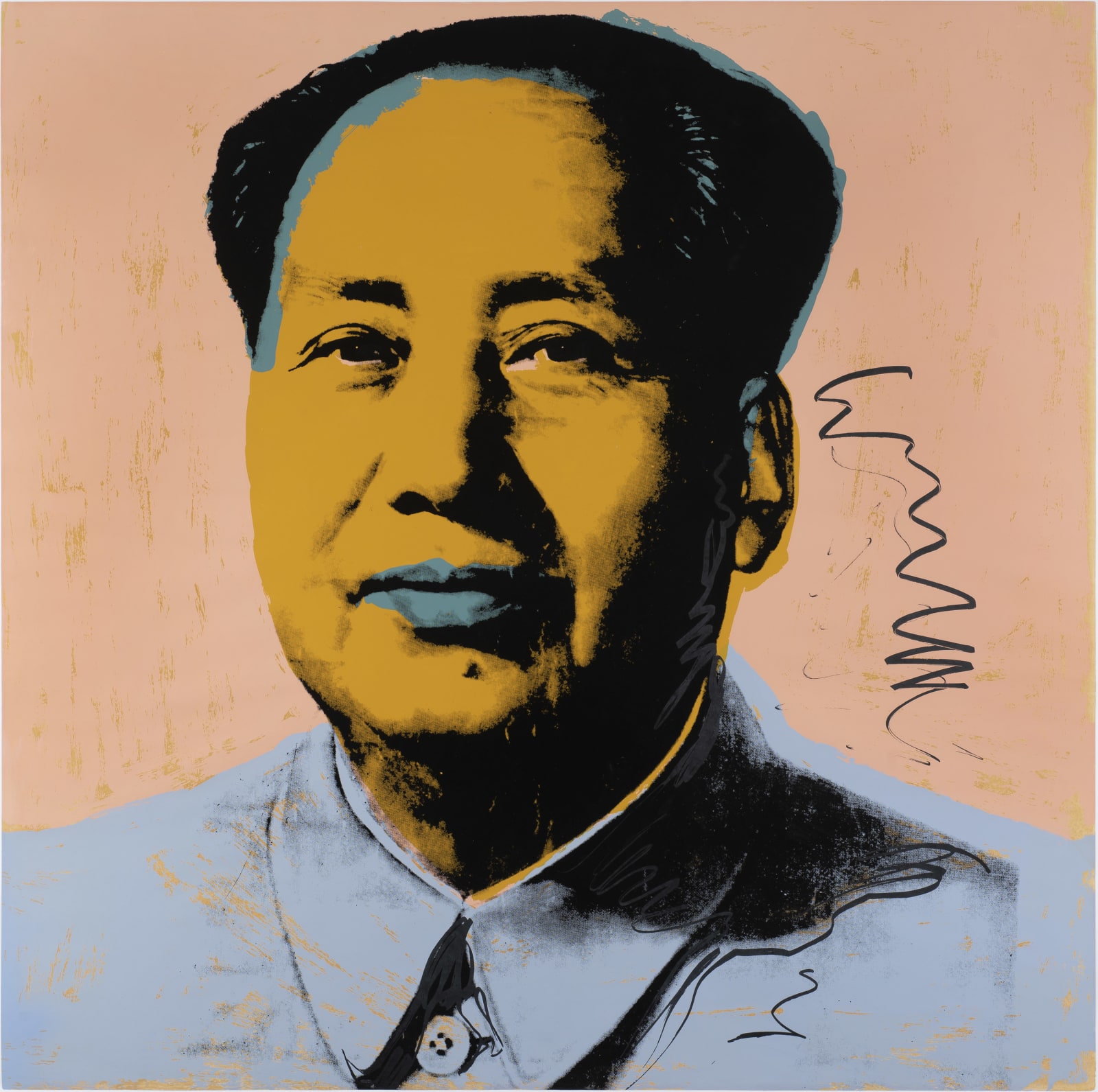
Winston Churchill famously quipped that Russia was a riddle wrapped in an enigma. A child of the cold war, Warhol himself became a sort of myth wrapped in an enigma. Exploring the concepts of consumer culture, celebrity and fame through his art and persona, Warhol is one of the most important figures, like Mao, of the 20th century who also shaped the world around him.
Andy Warhol began his career as an illustrator and quickly moved into exploring American society of the second half of the 20th century with his art. Warhol started with products that were drawn from his childhood including Coke bottles, the famous CAmpbell’s Soup Cans and Brillo pads before examining celebrities amongst other subjects. Relying heavily on mass production and reproduction methods, screen printing primarily, Warhol was able to create instantly recognisable images that spoke to millions the world over.
Warhol’s idea for making the Mao portraits was inspired by his long-time dealer and patron Bruno Bischofberger. Bischofberger encouraged Warhol to return to the medium of painting through portraits of the most public and important figures of the time. Mao, at this stage, was well known and one of the most famous and recognisable world leaders. Domestically, in China, his images were everywhere as his cult of personality was being nurtured by the Communist Party of China. Mao instantly appealed to Warhol who was excited by the idea of reproducing the images.

Thematically, using Mao as the principal subject of his work saw Warhol move away from exploring consumerism in American society into examining the politics of his era. Warhol created a series of 10 portraits that make up the F & S II 90-99 Mao series. Indeed, the reproduction and mechanisation that the medium of screen printing afforded Warhol allowed him to create an almost propaganda-esque machine of works. The image of Mao that Warhol used was acquired from the publication the Little Red Book authored by Mao in 1964 which was considered the cornerstone of the dictator’s ideology.
Andy Warhol’s treatment of Mao resulted in the creation of a portfolio of ten brightly coloured portraits that illustrated Warhol’s deep fascination with the clash of images between communist propaganda and American kitsch. By creating a pop0art version of Mao, Warhol could transform an otherwise menacing and sinister image of a powerful political figure into a glamorised pop icon. Indeed, there is a certain irony to the commercialisation of the image of a communist leader by an American artist which, we imagine, was not lost on Warhol.

Warhol’s iconic images of 20th-century leaders fostered the debate around how imagery, politics and mass media all intersect. Specifically, the Mao portraits highlighted society’s increasingly mass-marketed and produced world and its effect on the thin line between politics, idolisation and fane. Do we reward those who are famous for the sake of it? Is fame a barometer to success? Warhol’s seemingly simple portrait sparks great debate around such deeper questions that the seemingly shallow work, on first glance that is, invokes.

Although Andy’s official position always suggested political neutrality, his work greatly illuminated the political and social issues that were happening at that time, such as America’s involvement in the cold war of which greatly impacted Warhol’s output and subject matter.
For more information on our Andy Warhol screenprints for sale or to buy and original Andy Warhol prints, contact Andipa Editions via sales@andipa.com or call +44 (0)20 7589 2371.